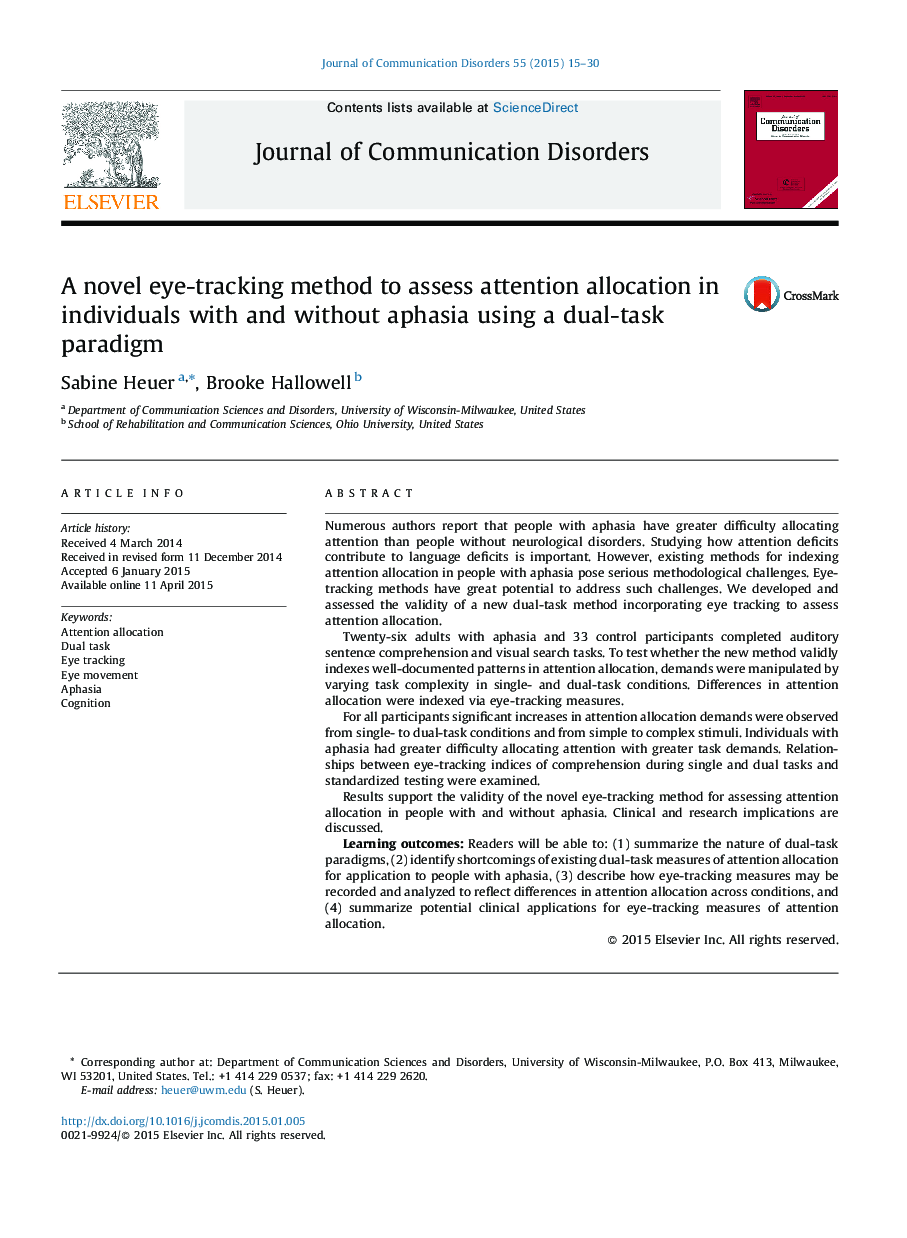| کد مقاله | کد نشریه | سال انتشار | مقاله انگلیسی | نسخه تمام متن |
|---|---|---|---|---|
| 910791 | 1473101 | 2015 | 16 صفحه PDF | دانلود رایگان |
• We developed an eye-tracking method to index attention allocation in people with aphasia.
• We manipulated stimulus and task complexity for a visual search and a comprehension task.
• We observed differences in attention allocation between the groups.
• We observed differences in attention allocation due to changes in task demands.
• Eye-tracking methods have promising potential for clinical assessment applications.
Numerous authors report that people with aphasia have greater difficulty allocating attention than people without neurological disorders. Studying how attention deficits contribute to language deficits is important. However, existing methods for indexing attention allocation in people with aphasia pose serious methodological challenges. Eye-tracking methods have great potential to address such challenges. We developed and assessed the validity of a new dual-task method incorporating eye tracking to assess attention allocation.Twenty-six adults with aphasia and 33 control participants completed auditory sentence comprehension and visual search tasks. To test whether the new method validly indexes well-documented patterns in attention allocation, demands were manipulated by varying task complexity in single- and dual-task conditions. Differences in attention allocation were indexed via eye-tracking measures.For all participants significant increases in attention allocation demands were observed from single- to dual-task conditions and from simple to complex stimuli. Individuals with aphasia had greater difficulty allocating attention with greater task demands. Relationships between eye-tracking indices of comprehension during single and dual tasks and standardized testing were examined.Results support the validity of the novel eye-tracking method for assessing attention allocation in people with and without aphasia. Clinical and research implications are discussed.Learning outcomes: Readers will be able to: (1) summarize the nature of dual-task paradigms, (2) identify shortcomings of existing dual-task measures of attention allocation for application to people with aphasia, (3) describe how eye-tracking measures may be recorded and analyzed to reflect differences in attention allocation across conditions, and (4) summarize potential clinical applications for eye-tracking measures of attention allocation.
Journal: Journal of Communication Disorders - Volume 55, May–June 2015, Pages 15–30
